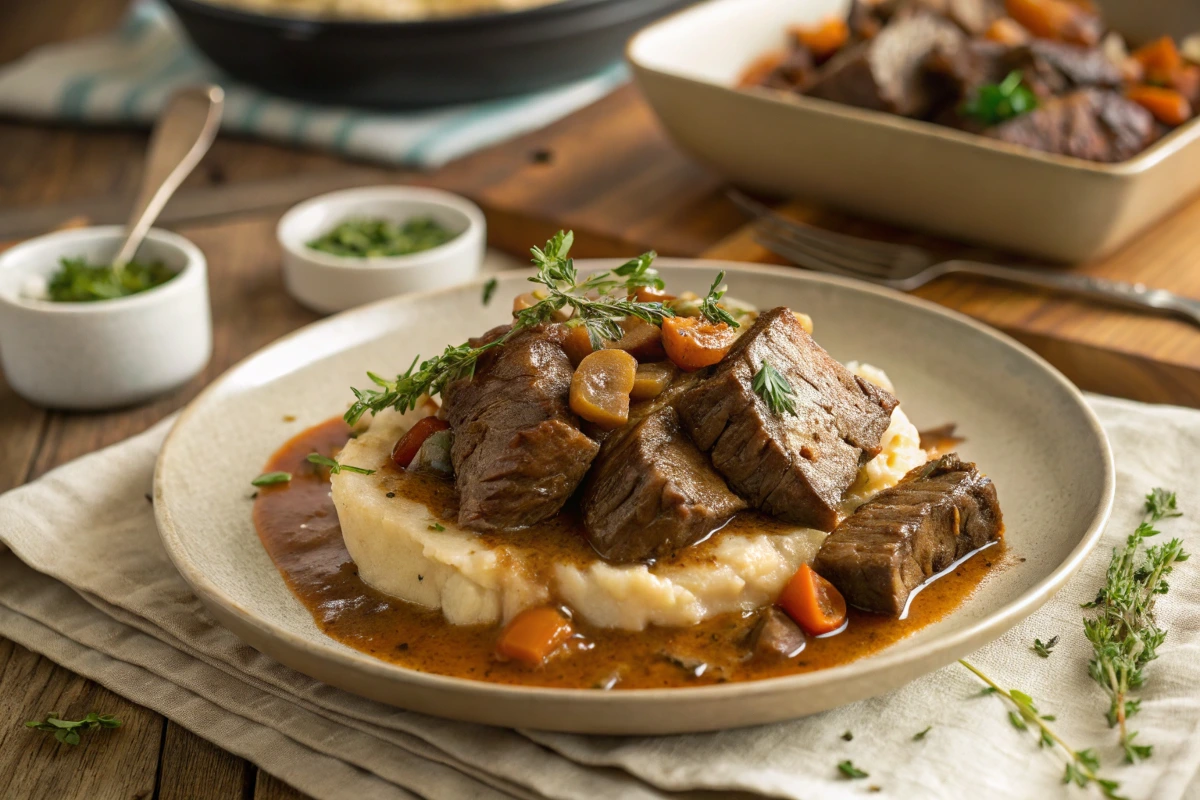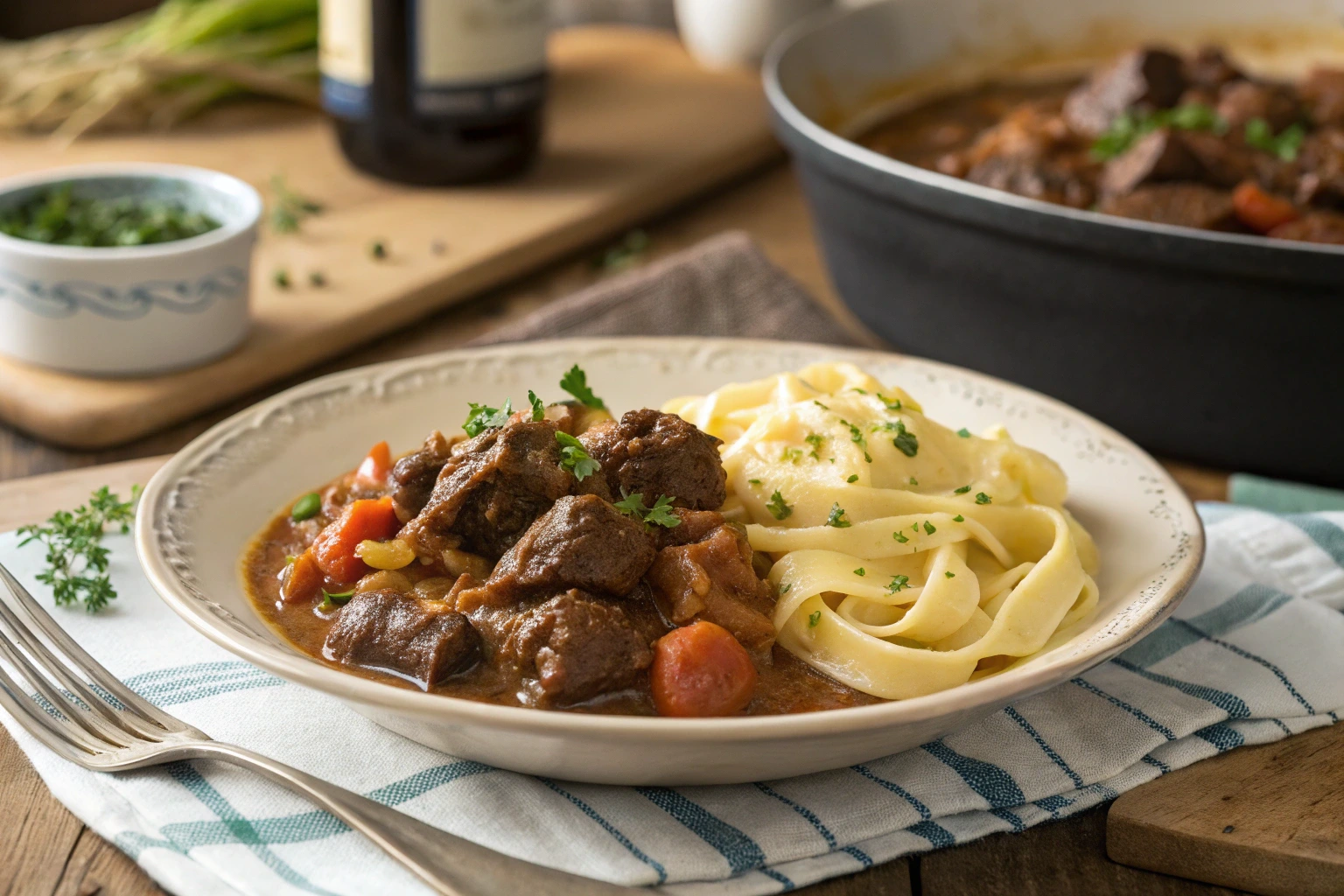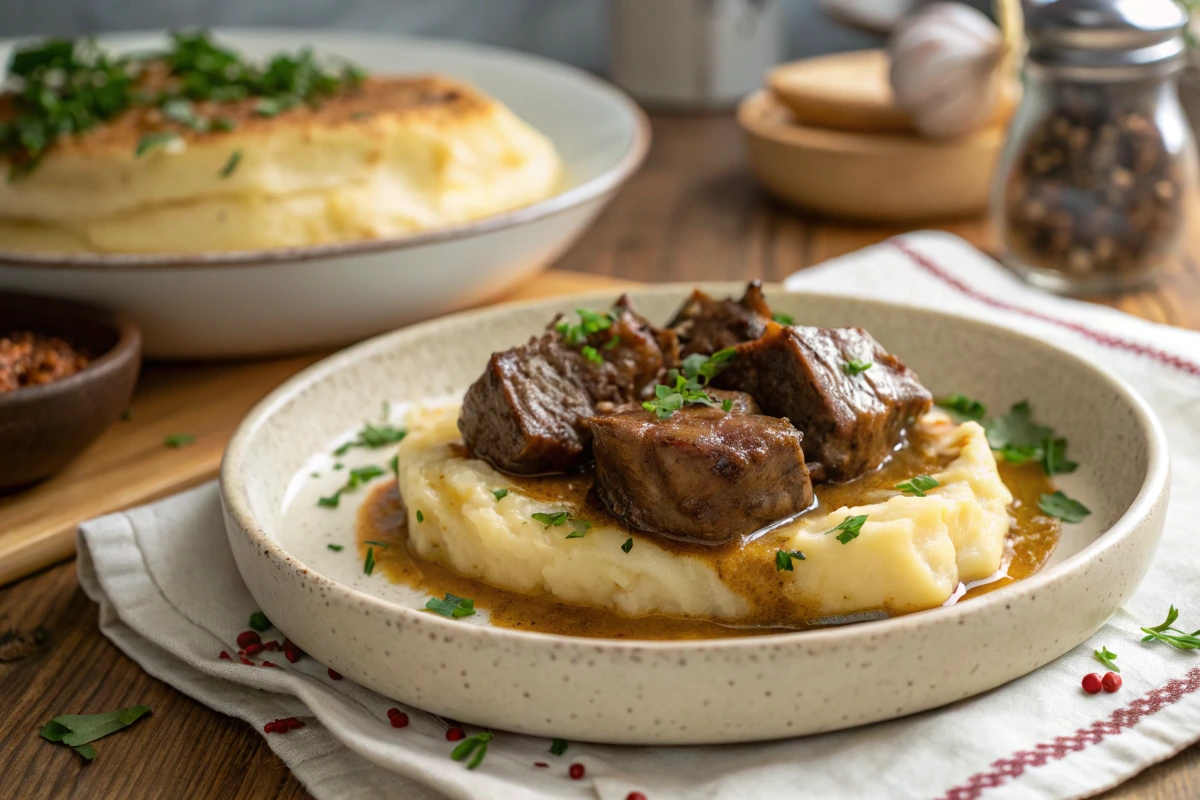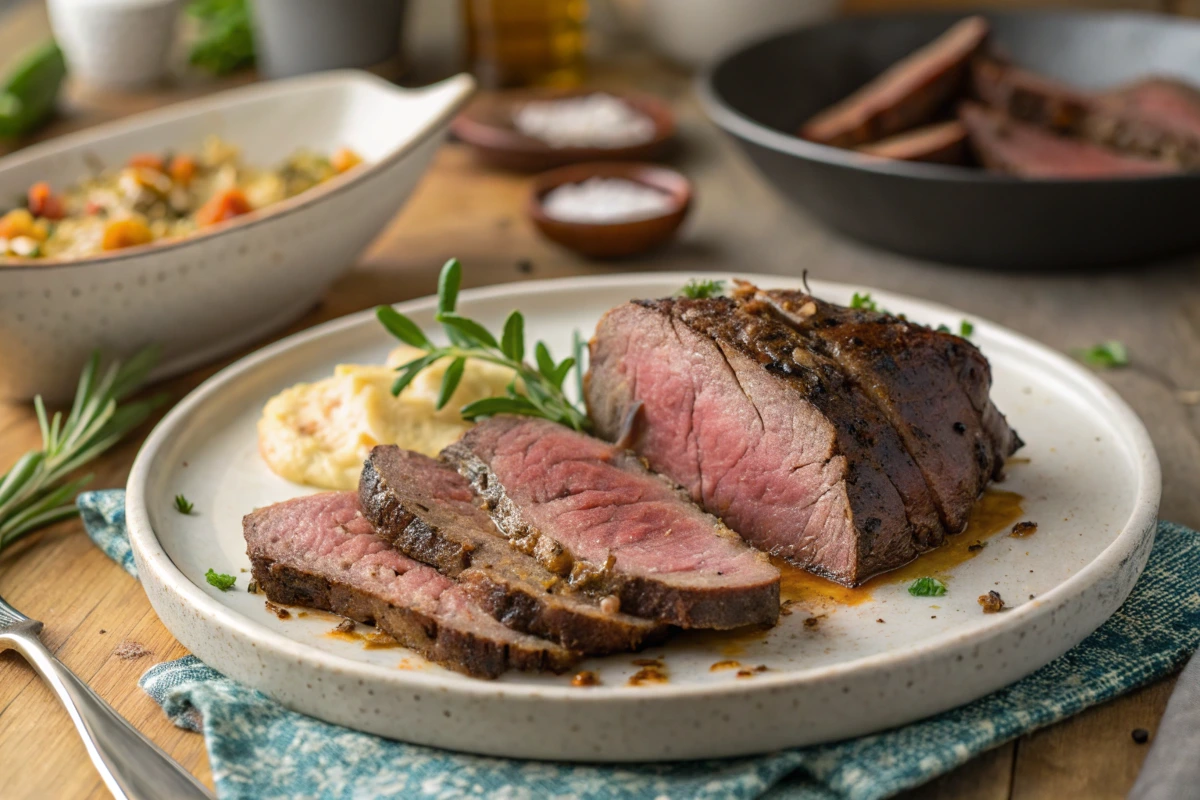Beef fat, often underestimated in the past, is now experiencing a well-deserved resurgence in kitchens, beauty routines, and sustainable practices worldwide. Moreover, commonly known as “tallow” when rendered, beef fat goes beyond being a mere byproduct of cattle. Indeed, it is a nutrient-dense, versatile ingredient with a multitude of uses that make it indispensable. Whether it’s adding a rich depth to your favorite dishes, providing hydration to your skin, or playing a role in eco-conscious solutions, rendered fat has earned its place as a valuable resource.
Additionally, this comprehensive guide explores every aspect of beef fat, from its fascinating history and traditional roles to its innovative modern applications and health benefits. Furthermore, you’ll discover why this timeless ingredient is making a strong comeback and how it can seamlessly fit into your lifestyle. In fact, you’ll learn how to render beef fat at home, integrate it into culinary creations, and even use it to elevate your beauty routine.
If you’re curious about how beef fat can enhance your daily life while promoting sustainability, you’ve come to the right place. Let’s dive into the unique properties of beef fat and uncover the incredible ways it can benefit you and the environment.
What is Beef Fat?
rendered fat, derived from the fatty tissue of cattle, is a versatile and nutrient-rich resource that has been used for centuries. Often referred to as tallow when rendered, beef fat serves multiple purposes, from cooking to skincare and even industrial applications. Its unique properties make it a valuable ingredient in modern living. Understanding its types, composition, and nutritional profile can help you appreciate why it’s gaining recognition as a sustainable and beneficial choice.
Definition and Types
rendered fat can be categorized into two main types based on its form and processing methods:
- Suet:
Suet is the raw, hard fat found around the kidneys and loins of cattle. It is prized for its high melting point and clean flavor, making it a traditional choice for certain recipes, such as puddings and pastries. Suet is unprocessed, meaning it requires rendering to transform into a more stable form for long-term storage and broader use. - Rendered Beef Fat (Tallow):
Tallow is created by melting suet and removing impurities through a filtering process. The result is a shelf-stable, solid fat that can be used in cooking, skincare, and even industrial products. Tallow’s versatility stems from its longer shelf life and higher resistance to spoilage compared to raw fat.

Composition and Nutritional Profile
Tallow is a unique blend of saturated and unsaturated fats, making it a valuable energy source and a carrier of fat-soluble vitamins. Its composition provides several health benefits when consumed in moderation:
- Stearic Acid:
This saturated fat is known for its neutral impact on cholesterol levels, making it a healthier option among animal-derived fats. Unlike other saturated fats, stearic acid does not significantly raise LDL cholesterol, contributing to a more balanced dietary profile. - Oleic Acid:
Oleic acid, an unsaturated fat also found in olive oil, is recognized for its heart-health benefits. It supports better cholesterol levels and adds a subtle richness to foods prepared with rendered fat. - Calories:
With approximately 9 calories per gram, tallow is an energy-dense resource. Its caloric density makes it an efficient source of long-lasting energy, particularly in low-carb or ketogenic diets. - Vitamins:
Beef fat contains fat-soluble vitamins, including Vitamins A, D, E, and K. These nutrients play a crucial role in maintaining healthy vision, strong bones, and a robust immune system.
Why Does the its Composition Matter?
The unique balance of fats and nutrients in tallow makes it a standout choice among cooking fats. Its stability at high temperatures prevents it from breaking down into harmful compounds, which is common with many vegetable oils. Moreover, the natural presence of vitamins adds a nutritional boost to meals and skincare formulations.
By understanding the definition, types, and nutritional profile of rendered fat, it becomes clear why this ingredient is experiencing renewed interest across culinary, health, and sustainability sectors.
History and Traditional Uses of Beef Fat
Historical Significance
Beef fat has been valued since ancient times. Early civilizations used it for survival, as it was a rich source of energy and a natural preservative. From the Americas to Europe, beef fat played a critical role in traditional diets.
Early Uses Across Cultures
- Cooking Medium: Used for frying, roasting, and flavor enhancement.
- Preservation: Key ingredient in pemmican, a long-lasting food made by Indigenous peoples.
- Household Uses: Employed in candle-making, soap production, and as a lubricant.
Modern Applications of Beef Fat
Beef fat, once relegated to the sidelines, is experiencing a remarkable resurgence thanks to its versatility and sustainability. With its unique properties and benefits, tallow is now widely used in both culinary and non-culinary fields. Its modern applications not only highlight its usefulness but also underscore its potential as a sustainable alternative to many synthetic and plant-based products.
Rendered fatin Culinary Practices
Beef fat has regained its rightful place in the culinary world, cherished for its ability to elevate flavors and textures in various dishes. Its high smoke point and rich taste make it an indispensable ingredient for professional chefs and home cooks alike.
- Frying:
tallow’s high smoke point—often exceeding that of vegetable oils—makes it perfect for deep-frying. It maintains stability under intense heat, resulting in golden, crispy fried foods without breaking down into harmful compounds. From French fries to fried chicken, beef fat imparts a distinct, rich flavor that other oils often lack. - Baking:
When used in baking, beef fat enhances the texture of pastries, pie crusts, and biscuits. Its solid structure at room temperature contributes to a flaky, tender crumb, especially in baked goods that require a fat source with minimal water content. - Flavoring:
Beef fat adds depth and umami to a variety of savory dishes. Incorporating it into gravies, sauces, or broths enhances their richness and complexity. A dollop of rendered beef fat in a stew or soup can elevate its flavor profile, giving the dish a hearty, comforting quality.

Non-Food Applications of Beef Fat
The benefits of tallow extend far beyond the kitchen. Its natural properties make it a valuable ingredient in several industries, particularly skincare, biofuels, and household goods.
- Skincare Products:
Beef fat is a popular ingredient in natural skincare formulations due to its hydrating and nourishing properties. Rendered beef fat, or tallow, is rich in fatty acids that mimic the natural oils found in human skin. This makes it ideal for use in:- Balms and salves to soothe dry, cracked skin.
- Moisturizers that lock in hydration without clogging pores.
- Soaps that provide gentle cleansing while promoting skin elasticity.
- Biodiesel:
Beef fat is increasingly being used as a sustainable alternative in the production of biodiesel. When processed, it becomes a renewable source of energy that reduces dependence on fossil fuels. Its lower carbon footprint compared to petroleum-based products aligns with global efforts to combat climate change. - Household Goods:
The versatility of beef fat extends to everyday household items. It is used in:- Candles: Traditional tallow candles burn cleanly and emit a warm, natural light.
- Polishes: Beef fat-based polishes restore shine to wood and leather goods.
- Lubricants: Its smooth texture makes it a reliable and eco-friendly alternative for greasing mechanical parts.
By embracing tallow’s modern applications, industries and individuals are rediscovering its potential to replace less sustainable options. Whether in the kitchen, skincare routine, or industrial production, rendered fat proves itself to be a versatile, eco-friendly choice that aligns with contemporary needs.
Its Benefits
Nutritional Benefits
- Rich in Vitamins: Contains fat-soluble vitamins essential for overall health.
- Supports Energy Needs: A concentrated energy source for active lifestyles.
- Contains Healthy Fats: Stearic acid and oleic acid are beneficial for cardiovascular health.
Environmental Advantages Compared to Alternatives
- Sustainability: Beef fat often comes as a byproduct of meat production, reducing waste.
- Eco-Friendly: A renewable resource that’s less environmentally harmful than palm oil or other plant-based fats.
How to Render Beef Fat at Home
Rendering beef fat at home is a simple yet rewarding process that transforms raw fat into tallow, a shelf-stable and versatile product. Whether you plan to use it in cooking, skincare, or household applications, homemade tallow ensures quality and sustainability. Here’s a detailed guide to rendering beef fat at home.
Step-by-Step Rendering Process
- Chop the Suet:
Start by cutting raw beef fat, known as suet, into small, uniform pieces. Smaller chunks melt faster and more evenly, ensuring a smooth rendering process. Use a sharp knife and work on a clean cutting board. - Heat Gently:
Place the chopped fat in a heavy-bottomed pot or slow cooker. Heat it over low to medium-low heat to slowly melt the fat without burning it. Stir occasionally to prevent sticking and promote even melting. This step can take several hours, depending on the amount of fat. - Strain the Liquid:
Once the fat has fully melted, pour it through a fine mesh strainer or cheesecloth into a heatproof container. This removes any impurities, leaving behind pure, golden liquid fat. - Store Properly:
Allow the strained fat to cool slightly before transferring it into clean, airtight jars or containers. Once it solidifies at room temperature, store the tallow in the refrigerator or freezer for longer shelf life.
Common Mistakes to Avoid
- Overheating the Fat:
Rendering fat at too high a temperature can result in a burnt, bitter taste and a darker color. Always maintain a low, steady heat. - Using Rancid Fat:
Ensure the suet is fresh. Using old or rancid fat will produce tallow with an unpleasant odor and taste.
Popular Dishes Using rendered fat
Beef fat isn’t just for frying—its rich flavor and high smoke point make it a key ingredient in many delicious recipes.
Traditional Recipes
- Yorkshire Pudding:
This British classic gets its signature crispy texture from beef fat. It’s the perfect side dish for roast dinners. - Beef Fat Fries:
Fries cooked in beef fat are celebrated for their extra crispiness and rich, savory flavor. They’re a step above traditional fries.
Innovative Modern Recipes
- Beef Fat-Infused Butter:
Blend beef fat with unsalted butter to create a spread that’s perfect for cooking steaks or spreading on bread. - Tallow-Roasted Vegetables:
Toss root vegetables with melted tallow before roasting to enhance their natural sweetness and add a depth of flavor.
Beef Fat in Skincare and Beauty
Tallow isn’t just for the kitchen—it’s a natural powerhouse for skincare and beauty. Its nourishing properties make it a valuable ingredient in many personal care products.
How Beef Fat is Used in Beauty Products
Rendered beef fat, or tallow, is a key ingredient in various natural beauty products, including:
- Soaps: Known for their gentle cleansing and moisturizing qualities.
- Creams and Lotions: Provides deep hydration for dry or sensitive skin.
- Lip Balms: Helps protect and heal chapped lips.

Benefits for Skin and Hair
- Hydration:
Tallow closely mimics the natural oils in human skin, locking in moisture for a soft, smooth texture. - Repair:
Rich in fatty acids, beef fat helps repair damaged skin and hair, promoting a healthy, glowing appearance.
Environmental Impact of Beef Fat
Usingrendered fat actively contributes to sustainability efforts by repurposing a byproduct of meat production that might otherwise be discarded. Additionally, its remarkable versatility allows it to be utilized in diverse applications, ranging from cooking and skincare to industrial uses, thereby significantly minimizing waste. Furthermore, beef fat provides an eco-friendly alternative to conventional products like palm oil or synthetic materials, which are often associated with environmental degradation. By embracing tallow, we can help reduce environmental harm while promoting more sustainable and responsible practices
Sustainable Practices in rendered fat Production
Beef fat is often sourced from the meat industry’s byproducts, minimizing waste and making full use of every part of the animal. Rendering fat for use in cooking, skincare, or biofuels contributes to a circular economy.
Comparison with Other Fats
- Palm Oil:
Unlike palm oil, which has been criticized for contributing to deforestation and habitat destruction, beef fat can be a more sustainable choice when sourced responsibly. - Synthetic Alternatives:
Many synthetic products rely on non-renewable resources. Beef fat offers a natural, renewable option with a lower environmental footprint.
Beef fat’s versatility, paired with its rich flavor and sustainability benefits, makes it an invaluable resource in today’s world. Whether you’re rendering it at home, preparing traditional recipes, or incorporating it into your beauty routine, tallow consistently demonstrates its worth in countless ways. Moreover, its diverse applications and eco-friendly qualities ensure that it remains a timeless and practical choice for modern living.
FAQs
What is beef fat called?
Beef fat is often referred to as tallow when rendered. In its raw form, particularly the firm fat surrounding the kidneys and loins, it is called suet. Both suet and tallow are widely used across various applications, including cooking, skincare, and industrial purposes.
Is beef fat a healthy fat?
Yes, rendered fat can be healthy when consumed in moderation. It contains a beneficial mix of saturated and unsaturated fats, including oleic acid, which is also found in olive oil and linked to heart health. Additionally, beef fat provides essential fat-soluble vitamins like A, D, E, and K, which support overall well-being. However, as with any fat, balance is key to incorporating it into a nutritious diet.
Is beef tallow halal?
Beef tallow is halal if it comes from cattle slaughtered in accordance with Islamic guidelines. The process must meet halal standards, including the humane and religiously prescribed method of slaughter. If you adhere to halal dietary rules, ensure that the source of the tallow complies with these requirements.
Can you eat the fat of beef?
Yes, it is entirely edible and cherished in many cuisines for its flavor-enhancing properties. It adds richness to dishes, acts as a reliable cooking medium, and improves texture. In particular, rendered fat is ideal for frying, baking, and roasting due to its high smoke point and ability to impart depth to foods. Rendered beef fat, or tallow, is commonly used in cooking, while raw fat, like suet, is often rendered before use.re consumption.
Conclusion
Beef fat is more than just a byproduct of the meat industry—it’s a versatile, sustainable, and nutrient-rich resource with countless applications. Moreover, its rich history, from traditional uses to modern innovations, highlights its significance in cooking, skincare, and even environmental sustainability. In fact, whether enhancing the flavor of your favorite dishes, nourishing your skin, or supporting eco-friendly practices, rendered fat proves its value time and time again.
Additionally, by incorporating tallow into your life, you can enjoy its unique benefits while contributing to a more sustainable future. Furthermore, from the kitchen to beauty routines and beyond, the possibilities are endless.
Therefore, start using beef fat today and uncover its incredible potential for improving your lifestyle and the environment!tential!


1 thought on “Unlock the Power of Beef Fat: What You Need to Know Now!”